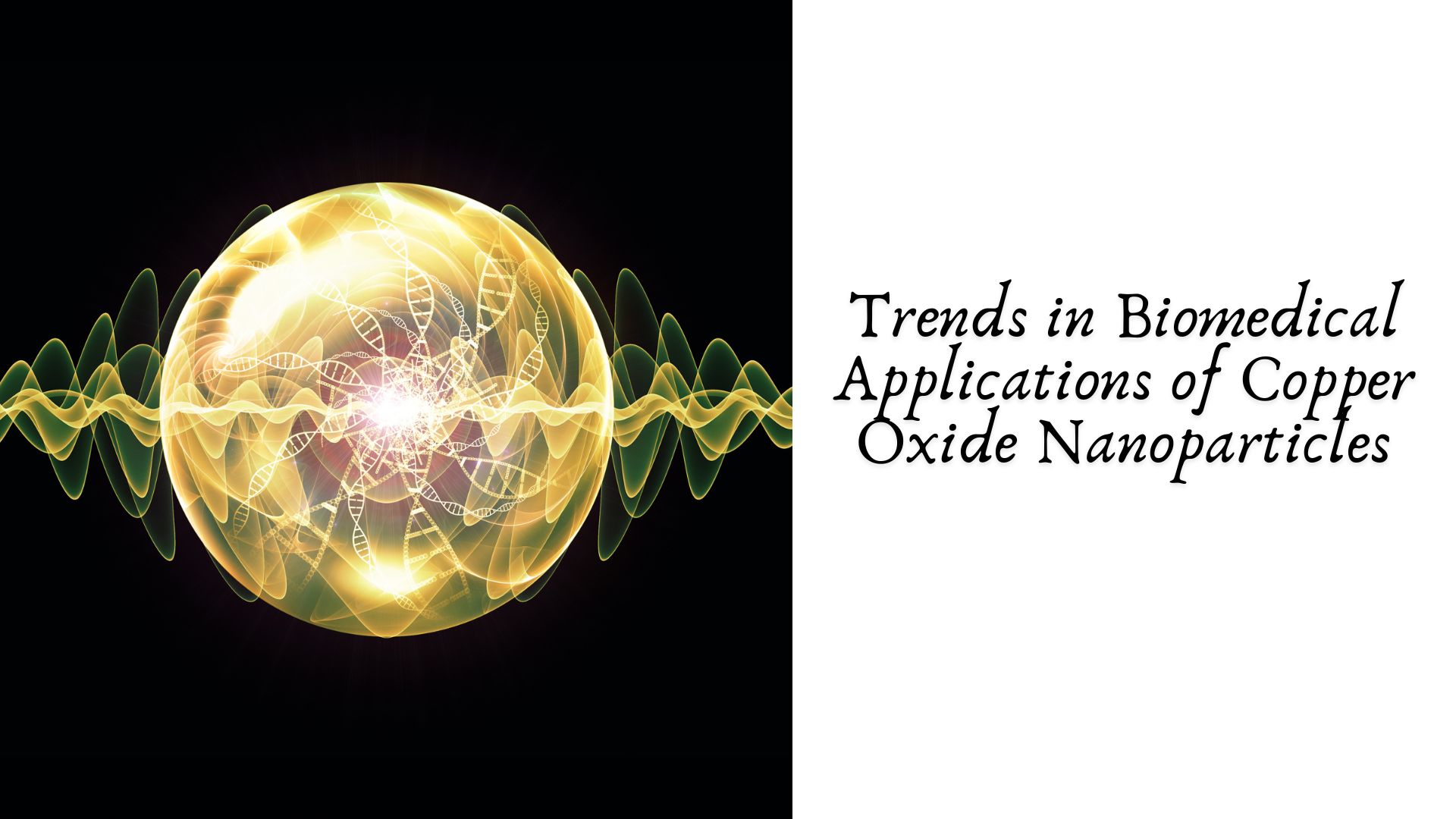Introduction
Copper oxide nanoparticles (CuO NPs) have garnered significant interest in the biomedical field due to their distinctive physical, chemical, and biological properties. With potent antimicrobial activity, cytotoxic potential against cancer cells, and the ability to act as drug delivery carriers, these nanoparticles are at the forefront of innovation in nanomedicine. Recent advancements in synthesis methods, surface modification, and understanding of their interactions with biological systems have opened new avenues for their use in diagnostics, therapeutics, and regenerative medicine. This article explores the latest trends in the biomedical applications of copper oxide nanoparticles and highlights emerging research directions.
Antimicrobial and Antiviral Applications
One of the most well-established uses of CuO NPs in biomedicine is their antimicrobial and antiviral properties. These nanoparticles exhibit broad-spectrum activity against bacteria, fungi, and viruses. Their mechanisms of action include:
- Generation of reactive oxygen species (ROS)
- Disruption of microbial membranes
- Interaction with microbial DNA and proteins
Recent studies have demonstrated their effectiveness in killing multidrug-resistant (MDR) strains, such as Staphylococcus aureus, Escherichia coli, and even pathogens like Candida albicans. In addition, CuO NPs have shown promising results in neutralizing viruses such as influenza and coronaviruses. This has led to their incorporation in face masks, coatings for hospital surfaces, and wound dressings to prevent infections.
Anticancer Activity and Therapeutic Potential
Copper oxide nanoparticles have emerged as potential anticancer agents due to their selective cytotoxicity toward cancer cells while sparing normal cells at lower doses. This selectivity is attributed to the higher oxidative stress tolerance in healthy cells compared to cancer cells.
Key developments in this area include:
- Apoptosis induction: CuO NPs trigger apoptosis in cancer cells through ROS generation and mitochondrial dysfunction.
- Combination therapies: Researchers are combining CuO NPs with chemotherapy drugs, enhancing drug uptake and efficacy while minimizing systemic toxicity.
- Targeted delivery systems: Surface-functionalized CuO NPs with ligands such as folic acid or antibodies are being explored to increase specificity toward tumor cells.
These trends indicate the growing relevance of copper oxide in the field of targeted cancer therapy and nano-oncology.
Drug Delivery and Controlled Release
Another exciting biomedical trend is the use of CuO nanoparticles as drug delivery vehicles. Their large surface area and modifiable surface chemistry make them suitable for loading a wide range of therapeutic agents, from antibiotics to anticancer drugs.
Recent innovations include:
- pH-sensitive systems: CuO NPs designed to release drugs in the acidic tumor microenvironment enhance treatment precision.
- Multifunctional nanocarriers: Integration with other materials like polymers, lipids, or other metallic nanoparticles to combine imaging, targeting, and therapeutic functionalities in one platform.
- Smart delivery systems: CuO-based nanocarriers are being engineered to respond to stimuli such as temperature, light, or magnetic fields for on-demand drug release.
Such capabilities are setting the stage for CuO NPs to play a crucial role in personalized and precision medicine.
Biosensors and Diagnostic Tools
The electrochemical and optical properties of copper oxide nanoparticles are being harnessed to develop sensitive and specific biosensors. These sensors are used for the detection of biomolecules, pathogens, and disease markers.
Key applications include:
- Glucose sensing: CuO NPs enhance the performance of non-enzymatic glucose sensors used in diabetes monitoring.
- Cancer diagnostics: CuO-based nanoprobes are used for detecting tumor markers through enhanced surface plasmon resonance and fluorescence.
- Pathogen detection: Integration into lateral flow assays or microfluidic devices has shown promise for rapid detection of bacterial and viral infections.
With the growing need for rapid, point-of-care diagnostics, CuO-based biosensors are poised to make significant contributions to disease detection and monitoring.
Wound Healing and Tissue Engineering
Recent research highlights the role of CuO nanoparticles in promoting wound healing and tissue regeneration. Copper ions are essential for angiogenesis, collagen synthesis, and skin regeneration. CuO NPs, when incorporated into hydrogels, scaffolds, or bandages, provide sustained copper ion release at the wound site.
Emerging trends include:
- Nanocomposite wound dressings: CuO-loaded hydrogels that combine antibacterial activity with regenerative support.
- Bioactive scaffolds: CuO NPs integrated into biodegradable polymers like PLA or PCL for bone tissue engineering, supporting osteogenesis and cell proliferation.
- Skin substitutes: CuO-containing biomaterials that mimic the extracellular matrix for skin repair and regeneration.
These innovations point toward the expanding use of CuO NPs in regenerative medicine and smart biomaterials.
Challenges and Future Perspectives
Despite the remarkable progress, the biomedical use of CuO nanoparticles is not without challenges:
- Toxicity concerns: High doses or prolonged exposure can induce cytotoxicity, genotoxicity, and oxidative stress.
- Biodistribution and clearance: Limited understanding of their in vivo behavior, including accumulation in organs and excretion pathways.
- Regulatory hurdles: Lack of standardized protocols for synthesis, characterization, and safety assessment.
Future research is focused on:
- Developing biocompatible coatings and functionalization strategies to minimize toxicity
- Studying long-term biocompatibility and pharmacokinetics
- Advancing green synthesis methods to reduce environmental impact and improve scalability
Interdisciplinary collaboration between materials scientists, biologists, and clinicians will be vital to translate these promising nanoparticles from the laboratory to clinical applications.
Conclusion
Copper oxide nanoparticles are at the cutting edge of nanotechnology-driven biomedical advancements. With proven antimicrobial action, potent anticancer properties, and potential as smart drug carriers and diagnostic tools, CuO NPs offer versatile and powerful platforms for a wide range of medical applications. As research continues to overcome current limitations, the future looks promising for the integration of copper oxide nanotechnology into routine healthcare solutions, heralding a new era of precision and personalized medicine.
